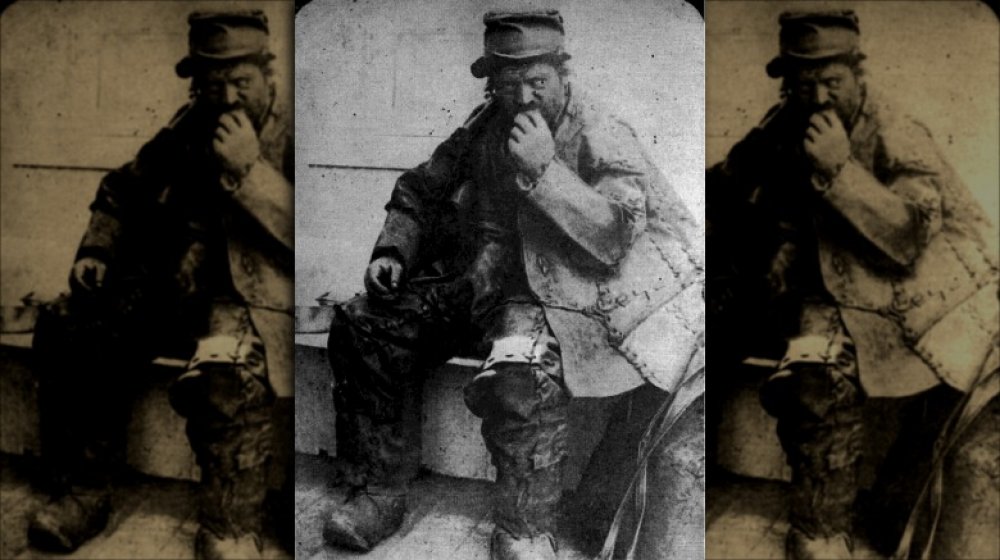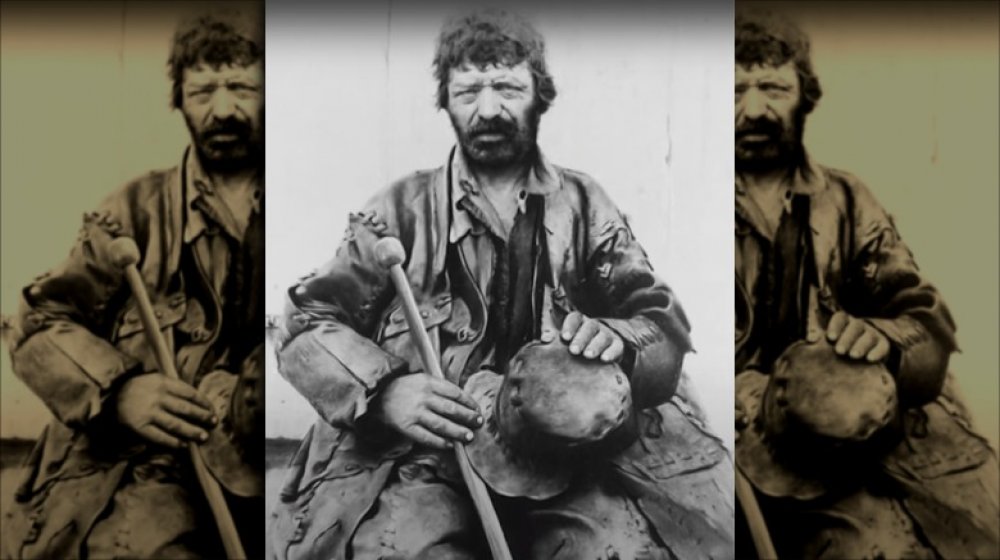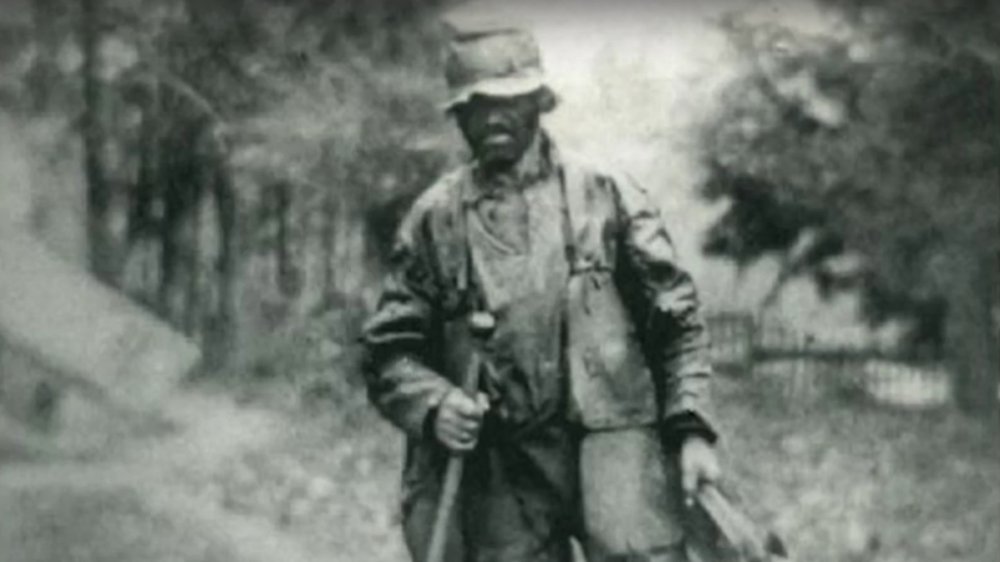The Story Behind The Leatherman Of Connecticut
If you stood patiently by the right Connecticut roadside between 1883 and 1889, sooner or later a solitary figure would appear in the distance. Most who saw him would quickly recognize the disheveled appearance of a homeless wanderer, long accustomed to living it rough. But a few characteristics set this man apart from your typical displaced soul searching for a safe place to hunker down for the night. There was the odd fact that he was always on the move, never stopping for more than a night in one place. Every 34 days, give or take, he'd shamble along the same roads. You could set your calendar by him. Then there was the oddity that gave him his name. He was always dressed from head to toe in a thick suit of leather — Summer or Winter, it didn't matter. Whenever people saw him he was decked out in the same bizarre ensemble. He became known as the Leatherman of Connecticut.
Who was this man? And where was he going? There are more theories out there than Rick Astley memes, but the short answer is no-one knows.
What we do know is he wasn't just a recognized figure in Connecticut. The Leatherman covered a stunning amount of ground. According to Leatherman historian Lee-Stuart Evans, the Leatherman continuously walked a massive 365-mile loop for at least six years, taking him as far north as Canada. That's well over 2,000 lonely miles trudged from when people first became aware of his existence. He may have been at it much, much longer.
Who was he?
Even when the Leatherman was still alive, newspapers and local folklorists speculated wildly about his "true" identity and motivation. Observers speculated that it must be hell to trudge those lonely roads — rain, hail, or blazing sun — all while encased in at least sixty pounds of leather. Perhaps he was punishing himself for something? Reinforcing that theory, the wanderer consistently refused offers of a roof for the night, preferring the solitude of a network of carefully chosen caves and hollows.
According to Connecticut History, a popular theory of the day was that the Leatherman was Jules Bourglay, a would-be paramour to the daughter of one of France's largest leather traders. Bourglay had financially ruined a prominent family in France and was reputed to have fled to Connecticut in disgrace. It all added up: a preoccupation with leather, an obvious desire to perform some elaborate lifelong act of penance, a stubborn insistence on complete anonymity. It was a delicious and neat story. It was also reliably debunked as complete nonsense years later. Sorry.
We just don't know who he was. One comment about his motivations remains consistent, though. The Leatherman was not simply a wandering crazy person, shuffling heedlessly from town to town. The Leatherman had a schedule; an ordered and considered approach to keeping himself alive. Each of his caves contained a stash of food, additional shelter, and even carefully tended gardens. As historian Evans points out, one local newspaper summed him up as "sane, except for an emotional affliction, [and] with a remarkable appetite." He defied simple boxes.
The Leatherman's legacy
One of the stranger things about the Leatherman is that, despite having had little to say and even less to give to those whose path he crossed, people have always felt an odd kinship with him. NPR reports that schools along his route rewarded star pupils the opportunity to wait eagerly by the roadside to see the Leatherman. If they were extremely lucky, he might even grunt and accept their gift of a small parcel of food. He rarely spoke, and he is said to have become irritated when people asked too many questions, yet for all that "absence," he seems to have become a legend in his own lifetime. The day of his arrival was eagerly anticipated — even celebrated — as an important cultural event. Hikers, historians, and road trippers still make the pilgrimage to one of his many marked caves, huddling for a moment in the shade of the same rocks the road-weary Leatherman made his temporary home nearly 150 years ago.
In 2011, NBC Connecticut covered the efforts of a team of archaeologists to exhume his remains with hopes of finding some clue that would forever name the elusive Leatherman. No trace was found of his body. All the team could retrieve was a few rusty nails — possibly the remnants of a coffin casket. NPR reports that not everyone was disappointed. As one local historian said: "30 years, 100,000 miles, never telling anybody who he was. That legacy to me should speak to us. [..] Leave him alone. Leave his bones alone." It seems the Leatherman defied boxes in death, as in life.


